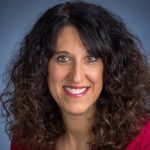Author: Ryan Jenkins
Connection with someone takes more than common interests of What Makes People Click. It also takes this. Do you know who created the world’s first social network? It wasn’t Zuckerberg, Dorsey, or Tom from MySpace. It was the person who kindled the first fire. The fire’s loud crackling, billowing smoke, and beautiful orange glow attracted others […]
Connection with someone takes more than common interests of What Makes People Click. It also takes this.
Do you know who created the world’s first social network? It wasn’t Zuckerberg, Dorsey, or Tom from MySpace.
It was the person who kindled the first fire. The fire’s loud crackling, billowing smoke, and beautiful orange glow attracted others in the village towards it. Soon everyone was gathered around basking in the warmth of the flames.
The discovery of fire changed everything. Fire became a cornerstone of human survival. It was instrumental in protecting the village from predators, cooking food, and providing light in the dark. And it transformed how people connected. The light from a fire extended the day giving humans more time to connect, providing warmth that wondrously enabled relationships to deepen like never before. People clicked over the flick of flames.
A recent study of the Ju/’hoan hunter-gatherers of the southern African countries of Namibia and Botswana found major differences between firelit talk and non-firelit talk to What Makes People Click. When the Ju/’hoan weren’t around a fire, their conversations centered on “practicalities and sanctioning gossip.” Firelit conversations, however, “evoked the imagination, helped people remember and understand others in their external networks, healed rifts of the day, and conveyed information about cultural institutions that generate regularity of behavior and corresponding trust.”
Fireside conversations put people on the same emotional wavelength, elicited understanding, and elevated trust and empathy, ultimately strengthening people’s social networks. It was also common for the Ju/’hoan to sing while sitting around a fire. To this day, the comfort and security we feel when we sit by an open fire can be traced to our ancient ancestors who utilized fire as a social and survival essential.
Fire then, and still today, cultivated so much connection between people because it created a shared reality. Individuals were jointly experiencing something beyond themselves in real time and What Makes People Click.
According to Columbia University psychologist Maya Rossignac-Milon, the theory of shared reality suggests that we are most likely to feel closer to each other when we turn our mutual attention to something beyond ourselves and What Makes People Click. That’s exactly what happened to the Ju/’hoan. No fire (or shared reality) and their conversations were superficial. With fire (or a shared reality) and conversation elevated, causing connections to thrive.
Shared reality is the third party in any social connection. And it matters. It’s not enough to have common interests with a friend or colleague but to share experiences together.
According to Paul Eastwick, a professor of psychology at the University of California at Davis who studies close relationships, “[Shared reality] serves as a reminder that similarity is often a thing that two people create or discover together in the moment. It wasn’t ‘there’ on paper before the interaction took place.” Often our urge is to connect with people who are similar to us, but shared reality theory suggests we may not know what those similarities are until we meet the other person. It’s not so much about with whom we are talking but what we are talking about.
Have you ever been on a delayed flight while on the runway and noticed how chatty some passengers become with complete strangers? The reason for the instant connections is a shared reality. The delayed flight becomes the new reality that every passenger shares. A shared reality serves as a triangulation point between two individuals that knits them closer together.
Additionally, spaces like museums or art galleries provide the material you need to create a shared reality with another person. What Makes People Click shared reality pushes conversations to be about the world around us rather than ourselves.
Strengthen Pairing Through Reality Sharing
With this understanding of shared reality, it’s clear how technology can break our social connections. If while at an art gallery, instead of consuming the same piece of art, someone is on their phone, the reality isn’t shared. While you may be sharing the same space, the full reality isn’t shared, thus hindering the potential for a connection.
Remote work environments (video calls, Slack channels, asynchronous collaboration tools, etc.) can also have a detrimental effect on people’s ability to construct shared realities. By definition, these virtual environments strip out the external world and severely limit shared realities from occurring.
If your goal is to strengthen team connections, get out of the office. Share a new reality. For in-person teams, get together out of the office. For remote or hybrid teams, get together out of your office and find What Makes People Click.
Getting out of the office enables colleagues to make sense of a new environment together, cementing relationships in the process. Whether it’s monthly, quarterly, or annually, make shared realities a priority because social connection is imperative to the health and performance of any team or community.
Want help creating a more connected, human-centered team with What Makes People Click? Contact Ryan to explore working together here.
What Makes People Click Article published by Ryan Jenkins on LinkedIn
Contact Us at WeSpeak Global and follow us on Twitter
The articles, video and images embedded on these pages are from various speakers and talent.
These remain the property of its owner and are not affiliated with or endorsed by WeSpeak Global.

I’ve often wished there were a remote control for real life that let you fast forward through the unpleasant parts and pause on the good stuff just so that Everything You Need to Enjoy One Tech-Free Day a Week. There’s not, but there is a practice that will put you back in control of your […]

In the traditional sales world, Engaging and Interactive Meeting, a professional salesperson would prepare for, and focus on, commanding the room, the conversation and the sales process, and you would be prepared to maximise the chances of success at whichever stage of the sale you are because that’s how you win deals for an Interactive […]

Not all exercises are created equal. My grandfather, or gramps as we affectionately called him was a disciplined exercise man. It wasn’t so much the amount of exercise he did but rather the 100% commitment with which he did it. He never missed a day unless he was ill and flat on his back. Every […]

Excited to share the big news that I’ve been talking with many of you about already! The Launch You’ve Been Waiting For. How to Get Results #NoMatterWhat, It turns out there’s actually proven science around how to get results #NoMatterWhat. It’s all too clear that this is still a really tough time for many people […]

August 19th, 1996 – A date that marked a new beginning for our family, The Value of Mail is no more! That was the day we landed for the first time in which would be our new home – Canada. I was 19 years old. In 1996, there was no social media. The Internet was […]

Unleashing the Power of Motivational Speakers: Jason Hewlett and David Allison In our journey towards personal and professional growth, we often find ourselves in need of inspiration, guidance, and a gentle push to unlock our full potential. This is where the power of motivational speakers comes into play. These dynamic individuals have the ability to […]

Culture and Talent Retention is a real challenge and employees are looking for organizations that inspire them, uplift them and create opportunities for growth and progression. Of significant importance to retaining people is the ability of an organization to create alignment between what they say and what they actually do. Misalignment of value systems is […]

Do you get easily distracted when you should be working on a task? Work/Break Block System (WBBS) – The Productivity Secret You Will Love! Do you find yourself taking breaks more frequently than you know you should? Do you sometimes spend too much time working on a task and then get totally burned out before […]
No results available
Our Mission
© All rights reserved 2025. Created using VOXEL THEME